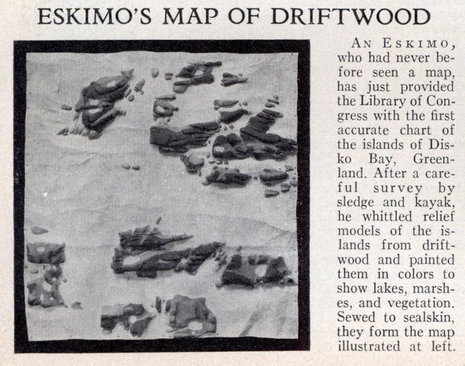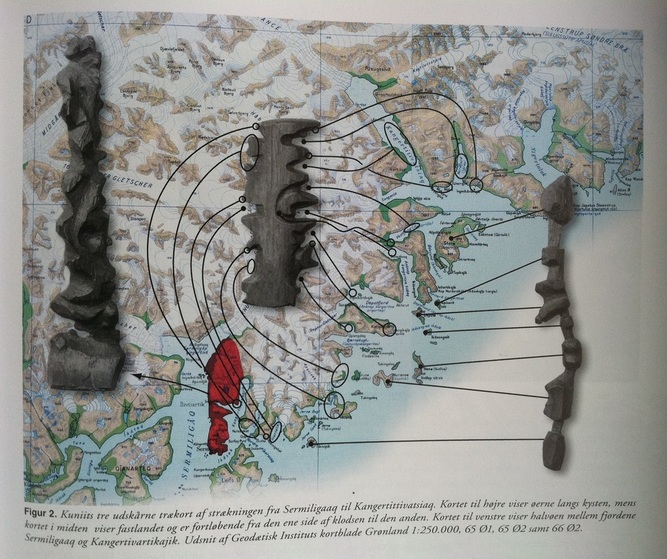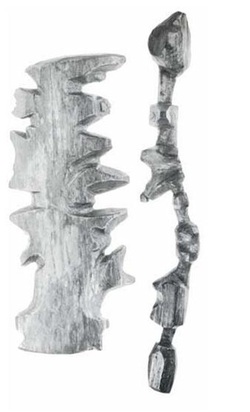
I pulled the article clip at left from the blog Modern Mechanix, which reprints items from old Popular Science magazines. Pretty cool, if a bit lacking in political correctness.
I wonder about the claim that the "eskimo" had "never before seen a map." Perhaps not a paper map-- but as you'll see below, there are other options.


At left, a closer look at the maps. Apparently they were "discovered" in 1880 by a Danish explorer named Gustav Holm, who was leading an expedition to the Ammassalik coast of eastern Greenland. I'm not sure if similar maps exist for the west coast (although the carved map featured in the Popular Science article above is from the west coast.)
I'm especially enamored with the fact that the maps are meant to be read up one side and down the other. Who needs a north arrow?? Not these guys. Very efficient use of space that I may employ in the near future.
From some accounts I've read (source: general googling), it also seems these maps were carved more to be felt than actually read-- which does seem quite practical for kayak or boat travel in potential darkness.
If you'd like to find out more, I believe all of this is properly and academically chronicled in The History of Cartography, Volume 2, Book 3: Cartography in the Traditional African, American, Arctic, Australian, and Pacific Societies. A nice beach read for a lazy summer afternoon.

 RSS Feed
RSS Feed